Have you spotted a wooden bike around town?
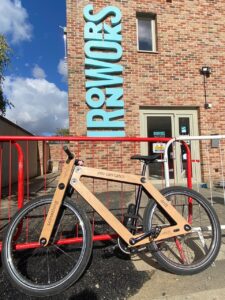
As part of Resonance-Cambridge, sculptor and poet Alec Finlay has transformed a bike into an artwork.
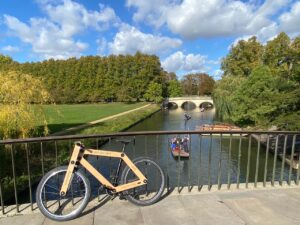
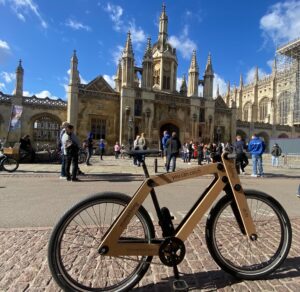
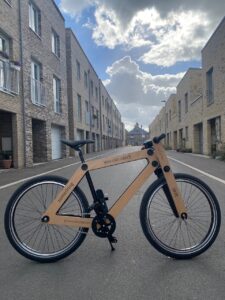

As part of Resonance-Cambridge, sculptor and poet Alec Finlay has transformed a bike into an artwork.



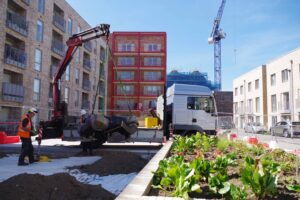
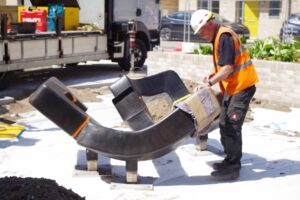
We are excited to share photos of the latest artwork as it is being installed at Ironworks. The piece ‘The Timekeeper’ by Jo Chapman references the history of the site as the location of the Headly’s former foundry and the area’s more recent past as a council depot and the people that worked there.
The artwork is inspired by the site as a former place of work, it acknowledges the thicket of time, acting as a palimpsest for the area. The location of the new homes at Ironworks has been a foundry, the workhouse allotments and piggery, a storage yard and the council depot. The sculpture is intended to be sat on and interacted with by the residents of the new homes.
The sculpture incorporates a verse from a poem, adding further layers to the piece. The poem was developed in collaboration with writer and poet, Hannah Jane Walker and the Lifecraft community group.
The form is developed from the shape made by the footprint of the foundry buildings, from old maps and drawings of the drainpipes cast by the Eagle Foundry. It is a contemporary, sculptural interpretation of a foundry’s language – of metal, casting, industry, technology – and forms that are both functional and robust. 3d wax printing was used to make the castings for the fabrication of the piece. The process provided a contemporary parallel, the incorporation of cutting-edge technology, and the approach of Headly’s who at the time also embraced innovations and the latest technology.
The colour references the more recent past as the council depot. The orange and acid yellow are the high visibility work clothes of the council workers.
Further landscaping around the piece will take place in the coming weeks, the images displayed show the new artwork developed with the community being lifted into place.
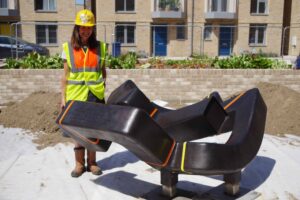
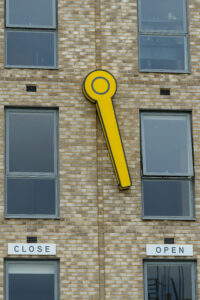
‘Steam Power’ by Tom Pearman
Mill Road, Cambridgeshire
Artwork by Tom Pearman
Photography : Mark Bullimore
Tom’s work has taken inspiration from residential, commercial and industrial switches as part of the research into the former and present communities and occupations in Petersfield.
Initially inspired by the objects on display at the Cambridge Museum of Technology, from electrical engineering to the switch that turns on our kettle. This ubiquitous, yet often overlooked, everyday item conveys much about the people who used the items and the period in which it was created.
A switch label, as simple as it may sound, enables us to identify the correct switch to flick, switch, or turn. Introducing this element to the artwork enables machines or appliances to be showcased in colourful and graphic style. And at the same time, can identify and showcase a wide variety of components and instruments that have a relationship with the location of the new homes and their residents, past and present.
Tom’s designs for a series of inter-related artworks introduce a range of different styles of switches and levers that would have been used in and around the site throughout its history. ‘Steam Power’ is a piece referencing the site’s use in the 1850s. Under the partnership of Headly and Manning, The Eagle Foundry manufactured a wide variety of steam-powered machinery and engines including engine boilers, gasometers and pumps for use on the land or for fen drainage. ‘Train Signal Switch’ also references the Eagle Foundry, which occupied the central part of what was to become the council store yard. An OS Map from 1886 showing the land to the left between the foundry and rear gardens of Kingston Street Houses, and to the right between the foundry and the railway has been used to inform the artwork.
‘PYE Radio’ seating references the radios and TVs manufactured at the former, Cambridge based PYE factory, with many of these sets previously a feature of the homes surrounding the development and workers at the former factory local residents.
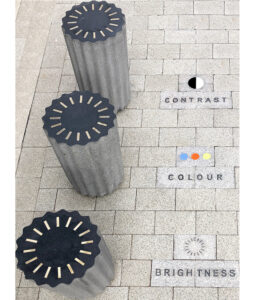
PYE seats – artwork by Tom Pearman
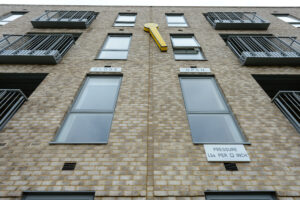
‘Steam Power’ artwork by Tom Pearman
Photography: Mark Bullimore
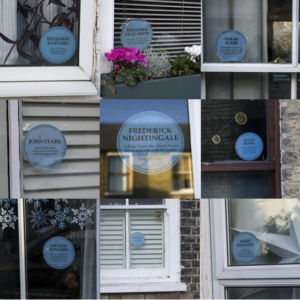
For residents on Kingston, Sturton, Sleaford streets and Rivar Place wishing to find out more about the history and former occupants of their homes, and to get involved in phase 2 of the ‘Ironworks Blue Plaque’ project, please get in touch at contact@resonance-cambridge.co.uk
Phase 3 of the project will cover Gwydir, Milford, York and Stone Street, along with York Terrace and Abbey Walk. If anyone living on these streets wishes to be involved please contact us at the above email address and we will be in touch.
We hope you enjoy the trail of Blue Plaques appearing in windows over the coming weeks and finding out more about the history of Sturton Town, whilst discovering some of the areas lesser-known former residents.
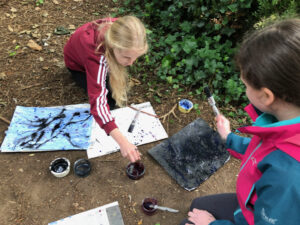
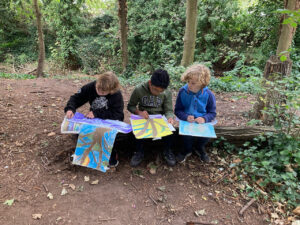
How amazing that it’s taken humans so many years to create the mobile phone and nature has been doing it all this time. Leo
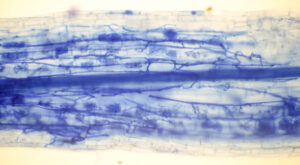
Scan of plant root showing mycorrhizal strands
CCI worked with artist Lilah Fowler – who has been commissioned to create artworks for the Meadows site – and plant scientist Jen McGaley from the University of Cambridge to develop the workshops.
School Workshops
Prior to the workshops, root samples from plants growing in Arbury and St Lawrence’s school grounds were collected by the children. Magnified and stained images, such as the one above, of the root systems of strawberries, mint, nettles and dandelions were produced by Jen. These images highlight the intricate mycorrhizal strands of fungi within the roots and illustrate the relationship between fungi and plants. The workshops prompted interesting discussions about how things grow beneath our feet and how we might relate to them.
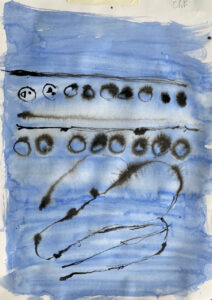
Pupil’s drawing
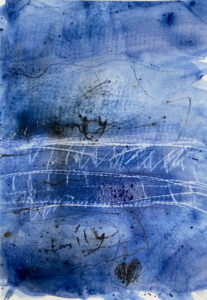
Pupil’s drawing
The next step is to shape the childrens’ artwork to become hangings for the Forest of Imagination. Caroline and Sally are creating these now, carefully editing the work to bring together a flavour of the children’s ideas into what will be printed onto 6 new hangings. The hangings will be exhibited as part of the Forest of Imagination this year and at the opening of the new Meadows Community Centre.
Our thanks go to CCI and the schools for creating the time and space for the children to have these wonderful experiences.
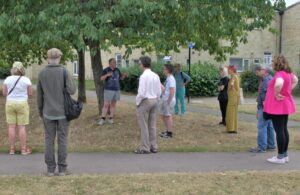
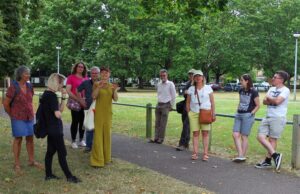
Thank you to everyone who joined us for the fascinating ‘Hedge Hoardings’ walking tour around Arbury and King’s Hedges on Sunday.
The tour was led by forager and local historian Cab Davidson, who generously shared his wealth of knowledge about the area, from the location of Roman Roads to previous medicinal uses of plants for worming dogs! The walk took in the ward’s oldest remaining stretch of hedgerow, traced the path of ghost-hedges and ended in the centre of King’s Hedges where a new work of public art is being developed.
Artist Hermione Spriggs, who has been appointed to create an artwork for the site, shared her research and creative proposals that will form part of the new homes currently being built. The site hoardings were displaying images of the ‘living’ hedges Hermione has created with the pupils from Grove Primary School as part of this project.
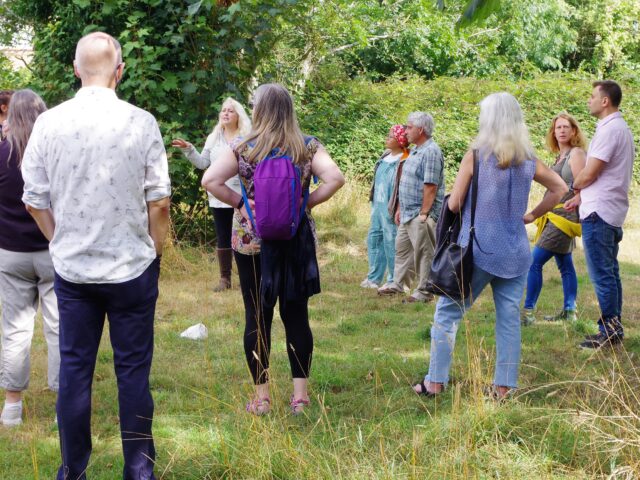
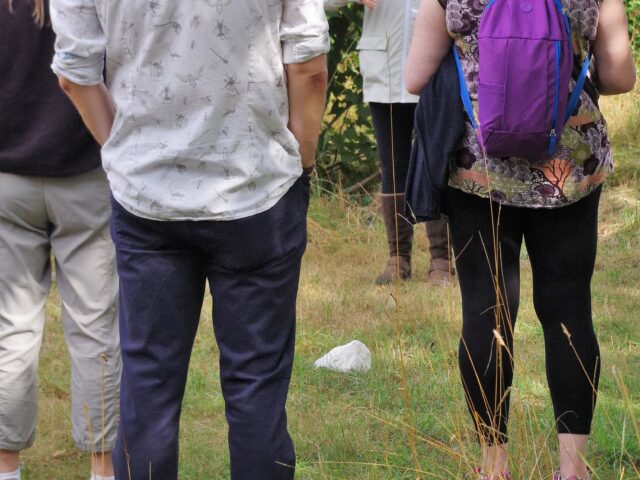
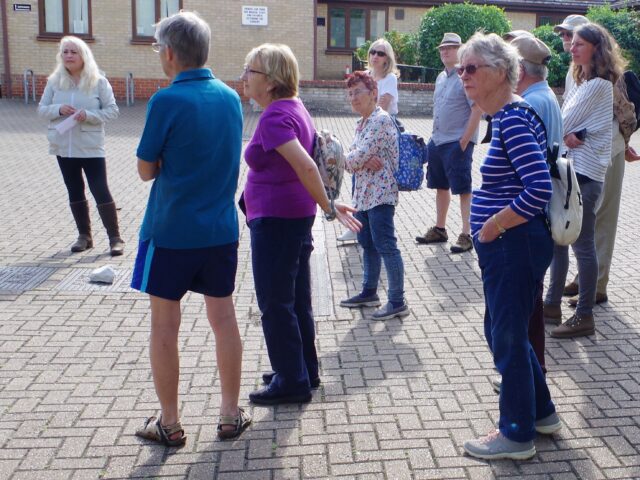
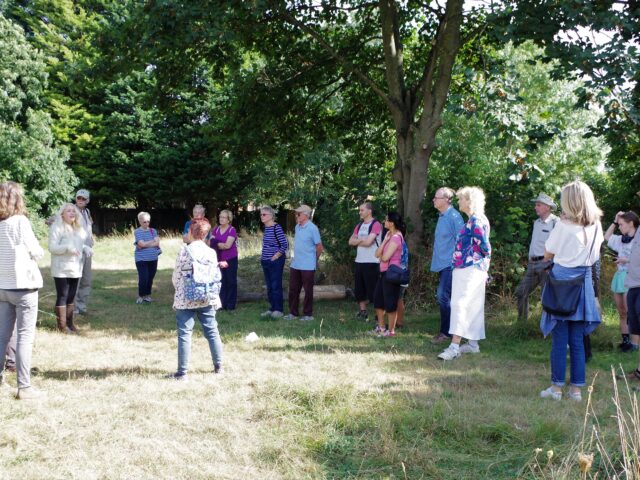
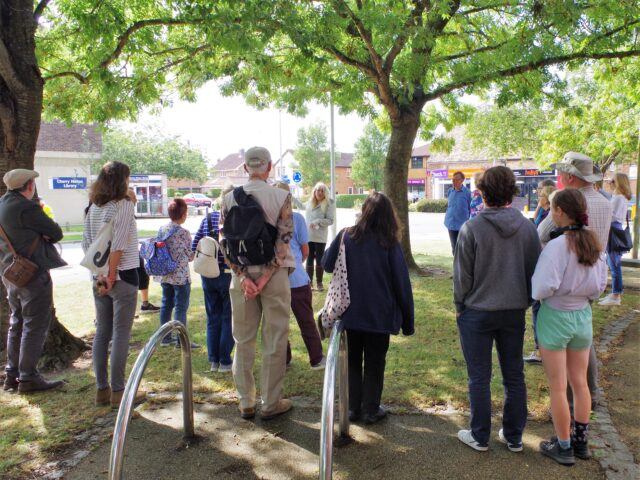
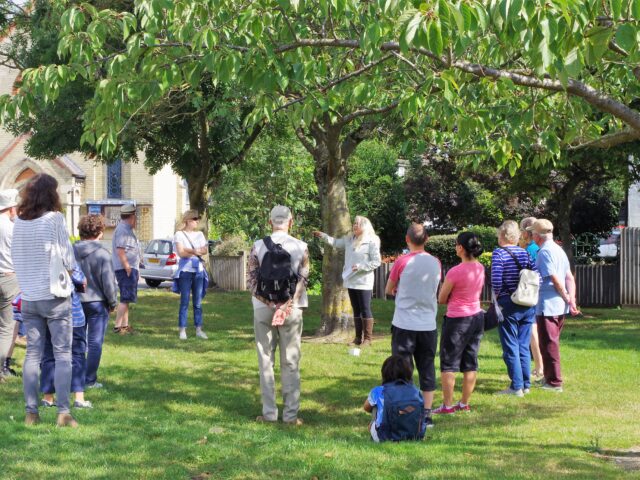
Thank you to everyone who joined us for the two fascinating ‘Chalk and Cherry!’ walking tours led by the wonderful Landscape Archaeologist and Local Historian Michelle Bullivant.
The event was held as part of Open Cambridge 2021 and provided an insight into the heritage of Cherry Hinton and the origins of the village. Along with sharing the history of the 34 Cherry trees planted to commemorate the servicemen – and one woman – who lost their lives in WWII, Michelle’s walk included hidden wildlife spaces along the route.
The tour shed a light on the aspects of the local area which have informed Janetka Platun’s proposals for artworks for the new homes being built. Everyone who came along also had their heights measured on a Cherry tally stick; these measurements will form part of the final artwork.
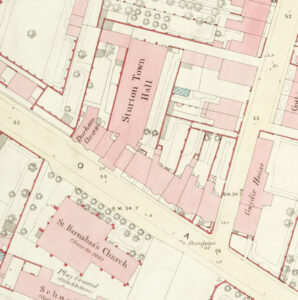
The film shows how an entire community to the west and north of Ironworks was built in a decade. The title ‘Sturton Town in Victorian Times’ tells the story of how the neighbourhood was open fields up until September 1869 when it was sold to Joseph Sturton, a building developer. Sturton rapidly constructed streets and facilities and sold off plots of land for housing and businesses, with streets planned and street names chosen ready for marketing in December 1869. Sturton created an entire community including over one thousand homes, victorian terraces mostly built between 1870 and 1880, known as ‘Sturton Town’ a parallel story to Ironworks today.
In the film, you’ll see the Victorian homes and businesses, including the Iron Foundry at Ironworks as Helen Weinstein tells the story of how Sturton Town once was a well-known area linking East Road to Mill Road. The area served not only the railway but a thriving neighbourhood of businesses and shops in Victorian times, from the Ironworks at Headly’s Eagle Iron Foundry to the dairies and brewers, shoe and boot makers, laundries and dressmakers who lived with their families in the terraced housing. There is evidence of these Victorian businesses still surviving to this day at the locations shown in the virtual history tour.
Please click on the link below to watch the film Introducing Sturton Town in Victorian Times: